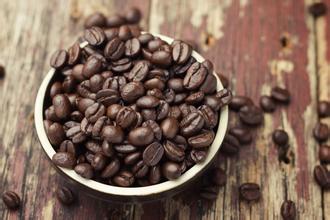Indonesia Bali Coffee Bean Manor Coffee Bean Indonesia Coffee Introduction
The most expensive coffee in the world is the "Kopi Luwak" of golden coffee, and the second should be Blue Mountain Coffee. Kopi Luwak was once exhibited at the 10-year Shanghai World Expo. One cup is nearly 300RMB. Golden rabbit coffee in Bali sells it. I have visited the coffee factory there. The taste is quite good. Very standardized and professional Indonesians have gone a bit too far in making Kopi Luwak, and it seems that it has been condemned by the Animal Protection Society. In addition, the price of Kopi Luwak in Indonesia is relatively expensive. the annual output is generally about 1 ton. a cup of Kopi Luwak from Bali in Indonesia costs people more than 100 yuan. Now there are cloud products of Kopi Luwak in Yunnan, China. How is the flavor? I haven't drunk it, and I'm not qualified to comment. Anyway, I personally do not want to drink Kopi Luwak. Many coffee beans produced in Indonesia are actually shipped abroad for sale, because the price will be higher than that sold in Indonesia. The concept of Asher is to keep locally produced coffee for local people and visitors to taste, rather than shipping it abroad to make more money. The frost in 975 destroyed most coffee crops in Brazil, but stimulated the development of coffee in Papua New Guinea. The Government has implemented a scheme to finance the creation of about 20 hectares of coffee plantations in rural or collective land ownership. This measure has indeed increased the penetration of coffee in the local economy, with annual production reaching 1 million bags by 1990.
However, it is almost inevitable that the surge in production leads to a decline in quality. Before 1991, the quality of coffee was good, and most of it belonged to open Y and so on. After 1991, the quality gradually declined, and with it the European market was lost. The extra price of coffee such as Y also gradually fell. This is related to the country's policy of "one grade, one price". This policy is not feasible for an industry as volatile as coffee. As a result, poor quality coffee beans damaged the image of high quality standards such as Y coffee, resulting in a backlog.
The government's response is to establish a new level of quality, temporarily suspend the production of coffee such as Y, and no longer implement the policy of "one grade, one price". This allows buyers to price according to quality, which is bound to have an impact on the income of farmers who produce shoddy coffee beans. By 1993, the quality problem had been basically solved. Most regular customers are buying coffee from Papua New Guinea again. Coffee such as Y is now sold at a slightly lower extra price, indicating that its quality has improved.
Although coffee trees grow vigorously in some places, the coffee beans harvested vary from raw to ripe due to the lack of persistence of the growers. AA is rare, and you can usually buy An and AB grades. The main characteristics of grade A coffee are: plump granules, light acidity and endless aftertaste.

Important Notice :
前街咖啡 FrontStreet Coffee has moved to new addredd:
FrontStreet Coffee Address: 315,Donghua East Road,GuangZhou
Tel:020 38364473
- Prev

Boutique coffee Indonesia Bali coffee bean manor coffee producing area Bali coffee producing area
The Bali Golden Rabbit Big Dou is the most shameless bean I have ever seen and the worst quality bean I have ever drunk, and almost all non-employees who go to Bali will be tricked into buying some beans because they say that the beans are not good enough to offend people's hatred, but coffee is a drink with great personality, and different lovers have different perceptions and hobbies of coffee, so it is not precious and rare that makes the decision.
- Next

Brief introduction of Indonesian Coffee from Kopi Luwak Farm in Bali
I still have some research on coffee. The reason why the golden coffee in Bali is suitable for the local natural environment and climate has a lot to do with it. This is a unique advantage, no matter what kind of coffee beans can not be surpassed in other places. Freshness is an important factor affecting quality. When shopping, grab one or two coffee beans and chew them in your mouth.
Related
- Does Rose Summer choose Blue, Green or Red? Detailed explanation of Rose Summer Coffee plots and Classification in Panamanian Jade Manor
- What is the difference between the origin, producing area, processing plant, cooperative and manor of coffee beans?
- How fine does the espresso powder fit? how to grind the espresso?
- Sca coffee roasting degree color card coffee roasting degree 8 roasting color values what do you mean?
- The practice of lattes: how to make lattes at home
- Introduction to Indonesian Fine Coffee beans-- Java Coffee producing area of Indonesian Arabica Coffee
- How much will the flavor of light and medium roasted rose summer be expressed? What baking level is rose summer suitable for?
- Introduction to the characteristics of washing, sun-drying or wet-planing coffee commonly used in Mantenin, Indonesia
- Price characteristics of Arabica Coffee Bean Starbucks introduction to Manning Coffee Bean Taste producing area Variety Manor
- What is the authentic Yega flavor? What are the flavor characteristics of the really excellent Yejasuffi coffee beans?

